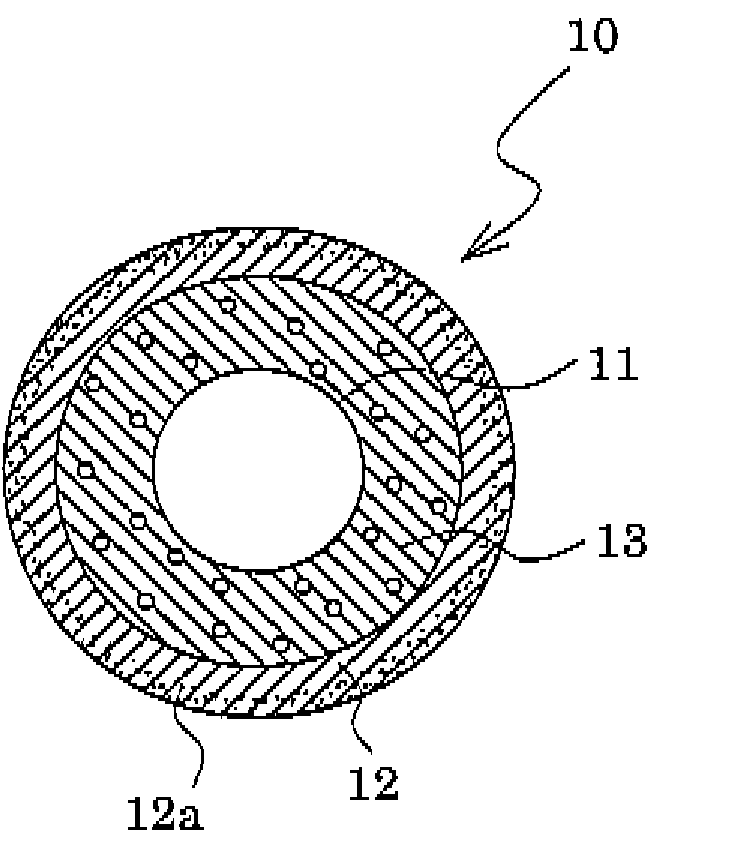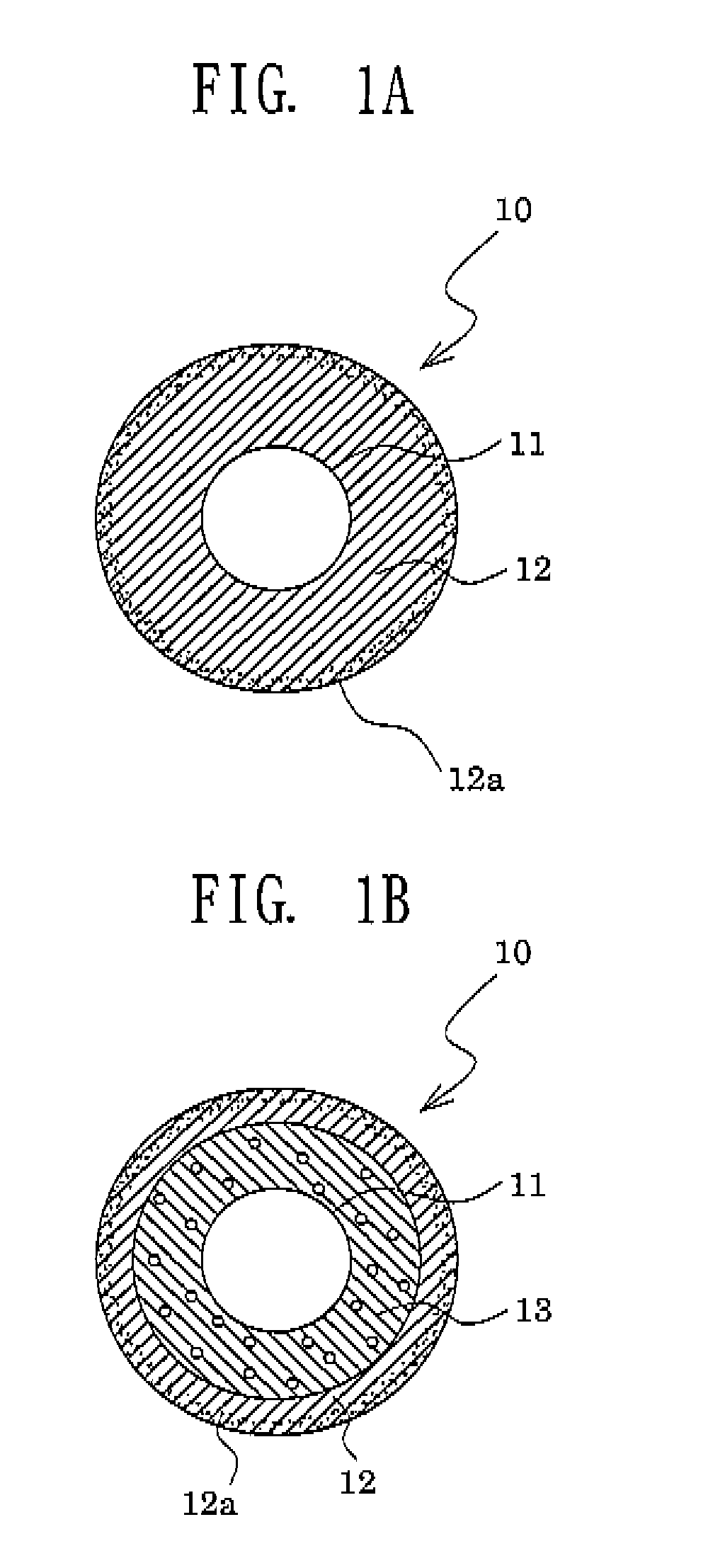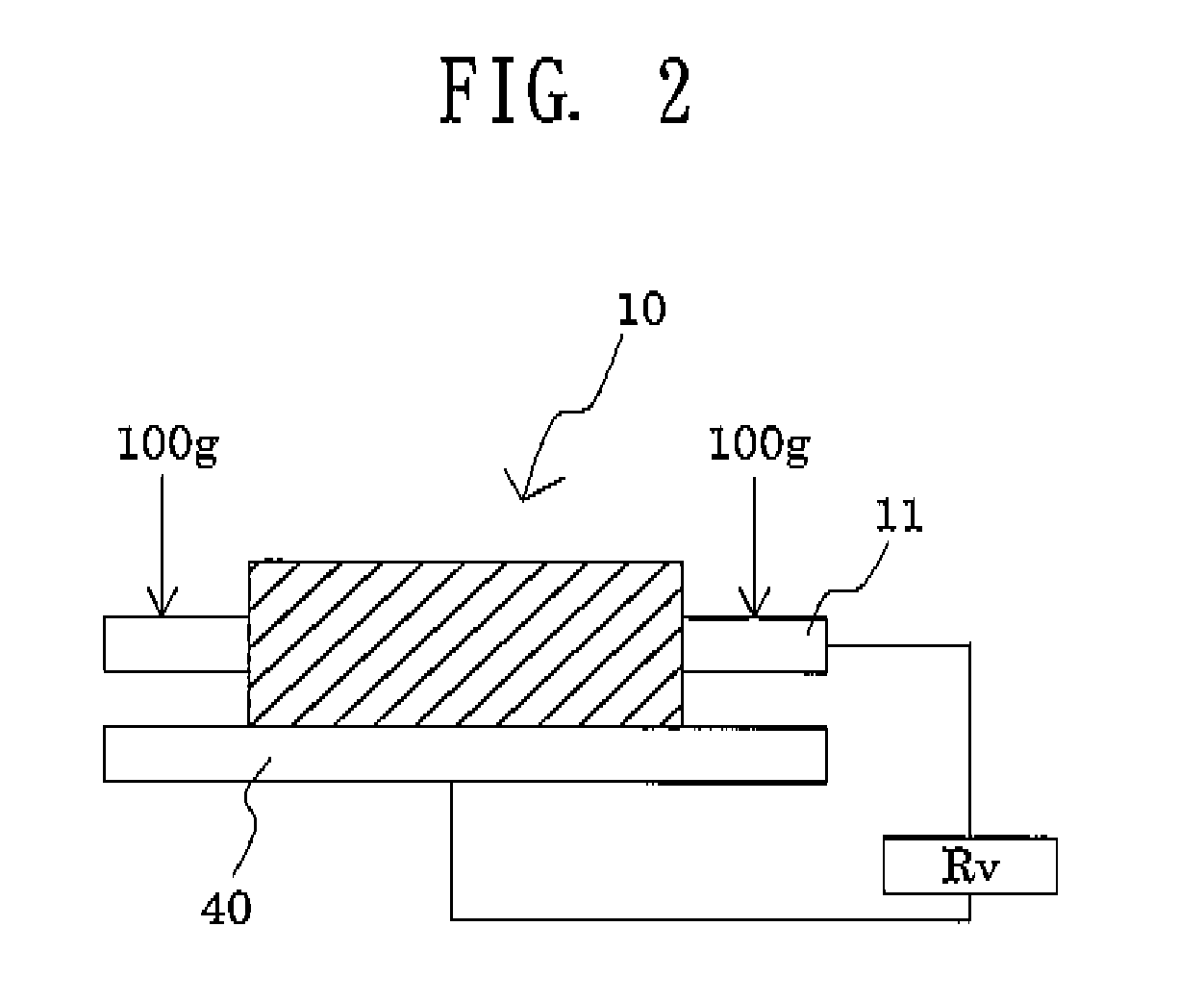Conductive rubber member
a technology of rubber members and conductive rubber, which is applied in the direction of electrographic processes, instruments, corona discharge, etc., can solve the problems of large variation in electrical resistance of rubber members, inability to achieve consistent image formation, etc., and achieve stable electrical resistance. , the effect of less affected
- Summary
- Abstract
- Description
- Claims
- Application Information
AI Technical Summary
Benefits of technology
Problems solved by technology
Method used
Image
Examples
example 1
Production of a Roller
[0048]Epichlorohydrin rubber (Epichlomer CG-102, product of Daiso Co., Ltd.) (100 parts), sodium trifluoroacetate (0.5 parts) serving as a conducting agent, zinc flower (3 parts), stearic acid (2 parts), and a vulcanizer (1.5 parts) were kneaded by means of a roll mixer, and the kneaded product was press-formed on the surface of a metallic shaft under predetermined vulcanization conditions (160° C.×30 min). The outer surface of the thus-coated shaft was polished, to thereby adjust the outer diameter to a predetermined value, producing a roller member having an elastic layer on the surface of the shaft.
Preparation of Surface-Treatment Liquid
[0049]An isocyanate compound (MDI) (15 parts) and epichlorohydrin rubber (Epichlomer C, product of Daiso Co., Ltd.) (3 parts) were added to and dissolved in ethyl acetate (100 parts), to thereby prepare a surface-treatment liquid.
Surface-Treatment of a Roller
[0050]The above-produced roller member was immersed for 60 seconds i...
example 2
[0051]Ethyl acetate (100 parts), Acetylene Black (product of Denki Kagaku Kogyo K.K.) (2 parts), and epichlorohydrin rubber (Epichlomer C, product of Daiso Co., Ltd.) (3 parts) were mixed, so as to disperse the components, for three hours by means of a ball mill. An isocyanate compound (MDI) (15 parts) was added to and dissolved in the mixture, to thereby prepare a surface-treatment liquid. The Example 1 roller member was treated with the surface-treatment liquid, to thereby form a surface-treated layer. The thus-treated roller member was employed as an Example 2 conductive roller.
example 3
[0052]Toluene (100 parts), Acetylene Black (product of Denki Kagaku Kogyo K.K.) (2 parts), a polyethylene oxide-polypropylene oxide-allyl glycidyl ether terpolymer (Zeospan 8030, product of Nippon Zeon Co., Ltd.) (8 parts), an acrylic silicone polymer (Modiper FS700, product of Nippon Oil & Fats Co., Ltd.) (1 part), and an acrylic fluoropolymer (Novafusso, product of Dai Nippon Shikizai Kogyo Co., Ltd.) (1 part) were mixed, so as to disperse the components, for three hours by means of a ball mill. An isocyanate compound (MDT) (10 parts) was added to and dissolved in the mixture, to thereby prepare a surface-treatment liquid. In a manner similar to that of Example 1, the Example 1 roller member was treated with the surface-treatment liquid, to thereby form a surface-treated layer. The thus-treated roller member was employed as an Example 3 conductive roller.
PUM
| Property | Measurement | Unit |
|---|---|---|
| melting point | aaaaa | aaaaa |
| melting point | aaaaa | aaaaa |
| level resistance | aaaaa | aaaaa |
Abstract
Description
Claims
Application Information
 Login to View More
Login to View More - R&D
- Intellectual Property
- Life Sciences
- Materials
- Tech Scout
- Unparalleled Data Quality
- Higher Quality Content
- 60% Fewer Hallucinations
Browse by: Latest US Patents, China's latest patents, Technical Efficacy Thesaurus, Application Domain, Technology Topic, Popular Technical Reports.
© 2025 PatSnap. All rights reserved.Legal|Privacy policy|Modern Slavery Act Transparency Statement|Sitemap|About US| Contact US: help@patsnap.com



